Step by Step Guide to Investing in DR Real Estate
September 1, 2025
With a robust tourism-driven economy, steady GDP growth exceeding 5%, and rental yields ranging from 6% to 8% in key regions, the Dominican Republic has emerged as a compelling destination for real estate investment in the Caribbean.
From beachfront developments in Punta Cana to urban rental opportunities in Santiago and Santo Domingo, the market offers both income-generating assets and long-term appreciation potential. Moreover, favorable foreign ownership laws, infrastructure expansion, and tax incentives such as CONFOTUR make the DR an increasingly attractive choice for global investors seeking diversification.
Whether you’re looking to diversify your portfolio, earn passive rental income, or secure a lifestyle asset with upside potential, DR real estate offers the rare trifecta: affordability, cash flow, and capital appreciation.
This article provides a data-backed, step-by-step guide to evaluating, entering, and optimizing real estate investments in the Dominican Republic—with legal, financial, and market intelligence designed to support sound decision-making.
The Dominican Republic combines strong macroeconomic fundamentals with a booming tourism sector—welcoming over 11 million visitors in 2024 and growing.
With GDP growth projected at 5.4% and rental yields of 6–8% in key areas like Punta Cana and Santo Domingo, the country offers a balanced opportunity for both income and capital appreciation. Add to that full foreign ownership rights and government-backed incentives, and it’s clear why DR real estate is gaining serious traction.

Are you looking for short-term rental income, long-term capital gains, or a personal-use asset that doubles as an appreciating investment? DR offers options across the board—from beachfront condos in Bávaro ideal for Airbnb, to urban apartments in Santiago that generate steady monthly returns. It is critical to clearly define your investment horizon, desired yield, and level of involvement early in your investment journey. Determining whether you prefer a hands-on approach or a passive income model will significantly streamline your property and location selection process.

Each region offers distinct value:
- Punta Cana/Bávaro: High tourist volume, strong STR returns (~6–10% yield)
- Santo Domingo: Urban rentals, growing professional class
- Las Terrenas: Boutique appeal for expats and retirees
- Santiago: Affordable, stable growth for long-term investors
Evaluate location based on your investment objective, local infrastructure, and property management options.

As shown in the affordability map, regions like Santiago and Puerto Plata offer some of the most cost-effective entry points into the Dominican property market, with prices significantly lower than the more saturated Punta Cana and Cap Cana areas. Always have your local attorney review tax exposure and verify CONFOTUR eligibility, as this can reduce your total cost of ownership by up to 15–20% over the first decade.
The DR allows 100% foreign ownership, but legal due diligence is non-negotiable. You’ll need a local lawyer to conduct title verification, check for lien, and guide you through the Promise of Sale, closing contract, and land registry process. Transfer tax (3%) and annual property tax (IPI, 1%) apply, though CONFOTUR-approved projects offer 10–15 years of tax exemption. Ensuring comprehensive legal clarity upfront can safeguard your investment and prevent costly complications down the line. Engaging experienced local legal counsel is highly advisable.
|
Tax/Fee |
Rate |
Applies To |
Notes |
|
Transfer Tax (ITP) |
3% of property value |
One-time, at purchase |
Calculated on higher of market or cadastral value |
|
Annual Property Tax (IPI) |
1% on excess value |
Annually, for properties over ~DOP 9.86M (~US $165K) |
First home exemption available; applies only to value above threshold |
|
Capital Gains Tax |
27% on net profit |
On sale of property |
Deducts original cost + documented improvements + inflation adjustment |
|
Rental Income Tax |
27% of net rental income |
Applies to foreign and local landlords |
Expenses can be deducted; property must be registered with tax authority |
|
Legal Fees |
~1–1.5% of purchase price |
One-time |
Varies based on transaction complexity |
|
Notary Fees |
~0.5–1% of property value |
One-time |
Required for official transfer registration |
|
Title Registration |
~US $50–100 (fixed) |
One-time |
Paid to the Title Registry Office |
|
Agent Commission |
3–5% (usually paid by seller) |
One-time |
Buyer should confirm if any part applies to them |
|
CONFOTUR Exemption |
0% on transfer, property, rental tax |
If certified under Law 158-01 |
Valid for 10–15 years; only on qualifying tourism-related developments[i][ii][iii] |
CONFOTUR is a Dominican government incentive that offers generous tax exemptions for real estate investments in approved tourism projects.
If you buy in a CONFOTUR-certified development, you get:
- No transfer tax (3%)
- No annual property tax (1%)
- No rental income tax (27%)
- Up to 15 years of tax relief
|
Tax/Cost Item |
CONFOTUR Property |
Non-CONFOTUR Property |
|
Transfer Tax |
0%, fully exempt under Law 158‑01 |
3% of property value (calculated on cadastral/market value) |
|
Annual Property Tax (IPI) |
0% (for up to 15 years) |
1 % annually on value above RD$10,190,833 (~US $166K) |
|
Rental Income Tax |
0% (for up to 10–15 years (income exemption)) |
27% of net rental income |
|
Capital Gains Tax |
Deferred if reinvested or treated under exemption rules—CONFOTUR doesn’t directly exempt it, but general profit roll‑over rules may apply (needs case‑by‑case legal advice) |
27 % on net profit (sale price minus cost + inflation adjustments) |
|
Ideal For |
Long-term rentals, STRs |
Lifestyle or resale buyers |
Typical investments range from US $150K to $500K+, depending on location and asset type. Factor in 4–6% for closing costs (or less under CONFOTUR), and 20–40% down if financing locally. Average rental income: $1,200–$1,500/month in prime areas. Combined returns (yield + appreciation) can reach 9–12% annually in strong-performing zones.
While cash remains common, foreign investors can access mortgages through Dominican banks with interest rates between 7%–9% (30–40% down). Developer financing is also available on pre-construction units, often with flexible terms. If you’re leveraging international capital, hedge against USD/DOP fluctuations and factor in remittance timelines for payments.
Comprehensive due diligence is paramount. Beyond legal checks, assess environmental risk, project credibility, and developer reputation. Inquire about zoning laws, construction permits, and utilities. For existing units, request detailed maintenance records, rental performance data, and community fee disclosures. Investors are advised to avoid unregistered or informal properties, especially in rural zones.
Investors should actively manage potential risks including currency fluctuations, regulatory changes, and economic downturns. Hedging currency exposure, investing through diversified properties, and consulting regularly with local advisors can effectively mitigate these risks.
Once due diligence clears, sign the final purchase agreement through a notary. Pay closing costs, register the title, and update municipal records. If CONFOTUR applies, your lawyer will file relevant applications to secure tax exemptions.
If you’re not based in the DR, appoint a local manager to handle bookings, repairs, and tenant relations. For vacation rentals, professional staging, concierge services, and digital marketing can raise occupancy and nightly rates. Net rental yields improve significantly with streamlined local operations.
Hold your asset for 5–7 years to benefit from appreciation and consistent rental income. Exit options include resale to foreign buyers, locals, or converting the unit into a personal-use property. Reinvesting in pre-construction units or reinvesting returns into a diversified DR portfolio is a popular path among early investors.
- 100% Foreign Ownership: Non-residents can legally buy, sell, and profit from real estate in the DR without restrictions.
- Attractive Returns: Rental yields average 6–8% in key regions like Punta Cana and Santo Domingo, with long-term appreciation potential.
- Favorable Tax Incentives: CONFOTUR-certified properties offer up to 15 years of exemption from property, rental, and transfer taxes.
- Affordable Entry Points: Quality properties start around US $150K–$200K, with lower costs in emerging areas like Puerto Plata and Santiago.
- Clear Legal Framework: Simple purchase process, but legal due diligence is essential—title verification, transfer tax, and registry compliance.
- Financing Options Available: Mortgages and developer financing are accessible to foreigners with competitive terms.
- Growing Market Confidence: Strong tourism growth (+11M visitors in 2024), infrastructure investment, and pro-investor policies are fueling demand.
- Clearly leverage the Dominican Republic's unique investment proposition of strong returns, favorable ownership laws, and proactive government incentives to diversify your portfolio.
- Prioritize investments in CONFOTUR-certified projects to maximize tax benefits.
- Always execute thorough due diligence, and proactively manage risks associated with emerging markets through strategic diversification and professional guidance.
With sustained tourism growth, a maturing real estate market, and robust government incentives like CONFOTUR, the Dominican Republic presents a compelling case for mid-to-long-term capital deployment. Its unique positioning—offering both yield-driven cash flow and long-term appreciation potential—makes it a strategic choice for investors seeking geographic diversification, tax efficiency, and access to an emerging asset class in the Caribbean basin.
As regional development accelerates, early investors stand to benefit from both structural tailwinds and first-mover advantages.

